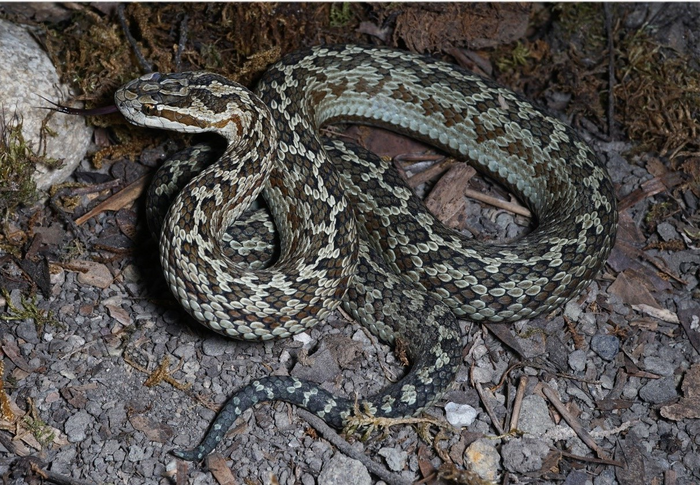Jiuzhaigou National Nature Reserve, a World Heritage Site, lies in the transition zone from the eastern edge of the Qinghai-Tibet Plateau to the Sichuan Basin in Sichuan Province, China, and occupies an area of 651 km2. The reserve is covered with well-preserved original forests, and numerous alpine lakes. Beautiful and picturesque, it is home to some rare animals, such as the Giant Panda (Ailuropoda melanoleuca) and Golden Snub-nosed Monkey (Rhinopithecus roxellana).

Credit: Sheng-chao Shi
Jiuzhaigou National Nature Reserve, a World Heritage Site, lies in the transition zone from the eastern edge of the Qinghai-Tibet Plateau to the Sichuan Basin in Sichuan Province, China, and occupies an area of 651 km2. The reserve is covered with well-preserved original forests, and numerous alpine lakes. Beautiful and picturesque, it is home to some rare animals, such as the Giant Panda (Ailuropoda melanoleuca) and Golden Snub-nosed Monkey (Rhinopithecus roxellana).
The herpetological diversity, in contrast to the mammals, is relatively low in the area due to the harsh alpine environment. To find out more about it, and to investigate the post-earthquake ecological system in the region, a group of researchers conducted a series of investigations in Jiuzhaigou National Nature Reserve. During their herpetological surveys, they collected some specimens of Gloydius, a genus of venomous pit vipers endemic to Asia, from Zharu Valley.
After running morphological and phylogenetic analyses, the scientists found out that these specimens in fact belonged to a yet-to-be-described species.
“The new species is morphologically similar, and phylogenetically closely related to G. swild, another recently described species from Heishui, Aba, Sichuan, but differs from it by having larger eyes (related to the head) and a continuous regular brown stripe on each dorsolateral side of the body,” explained the corresponding author, Dr Jingsong Shi.
“Thus, we named it after its unique color pattern: Gloydius lateralis.”
The newly described snake feeds on small mammals, such as mice, and “is active on sunny days by the roadside in a hot, dry valley”, the researchers write in their study, which was published in the open-access scientific journal ZooKeys.
“The discovery of G. lateralis provides new insights into the diversity and the distribution patterns of Asian pit vipers”, they write, suggesting that the formation of the Qinghai-Tibet Plateau might be one of the key factors to the geographical isolation of the alpine pit vipers in southwest China.
Jiuzhaigou National Nature Reserve, where G. lateralis was found, receives millions of tourists every year. “The only known habitat of the new species is Zharu Valley, and it is now under touristic development,” the researchers point out. “Thus, warning signs are still needed to remind visitors to watch out for the venomous pit viper, since this and another pit viper species, Protobothrops jerdonii, are often found in grass or bushes on both sides of roads.”
Snakes’ thermoregulation needs make them more prone to vehicle collisions, which is why the research team highlights the necessity to remind drivers to slow down in order to avoid road killings.
Original source:
Zhang M-H, Shi S-C, Li C, Yan P, Wang P, Ding L, Du J, Plenković-Moraj A, Jiang J-P, Shi J-S (2022) Exploring cryptic biodiversity in a world heritage site: a new pitviper (Squamata, Viperidae, Crotalinae) from Jiuzhaigou, Aba, Sichuan, China. ZooKeys 1114: 59–76. https://doi.org/10.3897/zookeys.1114.79709
Journal
ZooKeys
DOI
10.3897/zookeys.1114.79709
Article Title
Exploring cryptic biodiversity in a world heritage site: a new pitviper (Squamata, Viperidae, Crotalinae) from Jiuzhaigou, Aba, Sichuan, China
Article Publication Date
25-Jul-2022




